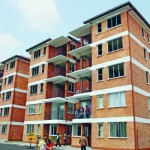Even for low-cost residential properties, location remains an important consideration for would-be buyers, according to Laurelcap Sdn Bhd’s Property Valuer Kit Au Yong.
“You cannot build affordable housings in areas too far such as Ijok, because it will also be costly for the people to travel to work,” he said.
However, Kit explained that developers usually construct affordable dwellings in places far from major urban areas, while more expensive residences are built closer. This is because they pay higher land premiums for better locations that offer more infrastructure and greater connectivity.
Another issue preventing these companies from building low-cost homes is rising construction expenses, noted Knight Frank Malaysia Managing Director Sarkunan Subramaniam.
“The report from Bank Negara Malaysia (BNM) shows that the maximum price of affordable houses in Malaysia is around RM282,000. However, developers are unable to provide a decent housing within that price range because of the construction cost.”
“Even if they do build a house according to that price, people will not buy it because they want a ‘wonderful’ house to live in. We cannot expect developers to sell houses that are not marketable,” noted Sarkunan.
Based on a recent report from the central bank, the overall number of unsold houses in the country rose from 130,690 units in Q1 2017 to a 10-year high of 146,4977 in the succeeding quarter, with nearly 82 percent of these comprising dwellings costing over RM250,000.
The significant increase in unsold units is attributed to a large supply of unaffordable units and limited availability of affordable homes amid a slower income growth in Malaysia.
“Together with a low state of financial literacy among a majority of Malaysian households, and a cultural preference towards home-ownership instead of renting, these have contributed to the high demand for house purchases,” said BNM.
While the government and developers work to boost the supply of low-cost homes, the central bank intends to enhance the local residential leasing market by introducing rules. Under Budget 2018, it announced the implementation of the Residential Tenancy Act, which aims to provide legal frame for tenants and landlords.
“The next step would be to establish a Tenancy Tribunal, which offers an inexpensive option to resolve disputes between landlord and tenant,” noted BNM.
Although Kit praised the central bank’s move, he questioned how these properties will be run. “My concern is, if the rental housing is a high-density development, who will pay for the maintenance fees? It will be a headache for the property manager.”
“These people are renting because they do not have enough money to buy the unit, will they have enough to pay for the property maintenance fees?”
He explained that the rules need to address this issue, as badly maintained flats will lose value over time and will negatively impact the country’s real estate sector.
Meanwhile, Sarkunan believes that Australia’s negative gearing approach could help Malaysia’s rental property sector. Basically, Australian owners of investment properties are allowed reduce their income tax with losses from their investment properties.
“For example, if I buy a property in Shah Alam and I have to pay RM6,500 per month but I can only rent it for RM1,000, the remaining RM5,500 can be taken from my income tax. In negative gearing, people will be able to claim the loss from their income tax,” he added.
Image sourced from Shutterstock
This article was edited by the editorial team of PropertyGuru. To contact them about this or other stories email editorialteam@propertyguru.com.my
For the latest property news, trends, resources and expert opinions, visit our Property News section. Home buyers, sellers or property renters looking for Malaysian Properties, may like to visit the New Launches or Project Reviews page.





